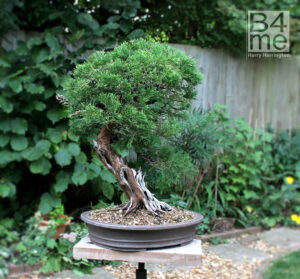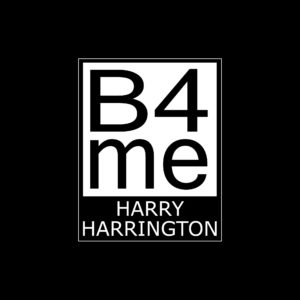Within the Art of Bonsai, there are a number of rules or guidelines that are intended to help both the viewer and practitioner understand or learn what makes a good or ‘bad’ bonsai design. To the novice, a bonsai will be simply a tree in a pot; to the more experienced enthusiast, a good bonsai will have certain features that makes it superior.
The beginner has to understand these rules in the same way that one has to learn what makes a Leonardo de Vinci painting better than a child’s.
These rules are not set in stone. They are there to help guide those new to bonsai and learning them can help the beginner begin to ‘read’ a bonsai rather than simply see it as a mass of leaves and branches. Most classic and many good quality bonsai will break ‘rules’; this helps to make them unique. However, until these basic rules are learnt, understood and mastered, it is difficult to break them with success.
General points
There should a greater mass of foliage behind the tree than in front of it to create a sense of depth.
Man-made cuts or wounds should not be visible from the front unless created as features.
The tree should be 3-dimensional, it should not appear ‘flat’ when viewed from the side.
The tree should not appear to lean backwards; informal forms should have an apex that leans forward.
Roots Roots/nebari should run flat along the surface of the compost and not be raised out of the compost (excepting trees grown in a true exposed-root style).
Roots spread should reflect the form of the tree and appear to anchor the tree firmly into the compost; for trees with upright forms the roots should radiate evenly from around the base of the trunk, for slanting forms or cascades the roots should appear stronger on the opposite side of the trunk to the direction of lean.
Roots should appear to be of a roughly even size as they emanate from around the base of the trunk; inferior material will display 1 or 2 disproportionately thick roots only. However, slightly thicker, stronger roots should be located at the sides of the trunk and should not protrude towards the front.
Surface roots not be straight and should exhibit some taper and branching.
Trunk
With most forms, the trunk must taper from its thinnest point at the apex to its widest point at its base. It is preferable for the trunk to taper as gradually as possible.
The trunk must not have inverse taper; that is to say the base of the trunk should not be thinner than any other point of the trunk.
Half to two-thirds of the trunk should be visible from the front to reveal the structure of the trunk.
Trunks with any slope in any direction should also slope at ground level.
Grafted trunks should not be apparent unless inspected very closely.
Informal forms should preferably have turns or bends that diminish in size and length as the eye travels from trunk base to apex.
Trunks should be cleaned of algae and moss.
Branches
Branches normally commence around one-third to half the height of the tree.
The first branch should be the thickest with the branches thinning in diameter as they progress towards the apex.
The first branch should normally point towards the left or the right when the tree is viewed from the front.
No branch should lie directly above another.
No branch should cross another.
All branches should exhibit taper from trunk to tip.
All branches should be shaped similarly to each other and should reflect the movement (or lack of) in the trunk.
Normally, only branches in the top third of the tree should point directly forwards, towards the viewer.
No two branches should appear from the same place on the trunk (bar branches).
No two branches should appear to be at the same height.
No branches should cross the trunk as seen from the front.
Tree outline
The trees’ outline is normally roughly triangular.
Depending on individual species the apex should be triangular or rounded but not pointed.
Group plantings or trees with multiple trunk forms should have an overall triangular outline, this triangular shape should not be symmetrical.
In some groups, a dominant tree can disturb the overall triangular shape.
Foliage, flowers and fruit
Dead or diseased leaves should be removed.
Leaves should not show white lime deposits from being misted or sprayed with hard tap water.
No insects or cobwebs should be visible on the tree.
All leaves should be of similar size; overlarge leaves should be removed.
All flowers or fruit should be free of blemishes.
Pots
Pots should be clean and undamaged.
The colour of the pot should not clash with the dominant colour of the tree whether that be the colour of the leaves, flowers or fruit.
Glazed pots are generally considered better for deciduous species whilst unglazed pots are generally used for coniferous trees.
Antique pots should be used for old trees, new pots should be used for younger trees.
The pot should not distract attention from the tree, it should compliment and enhance it.
Ornate pots are more suitable for flowering and fruiting trees or mame bonsai.
The tree should not be planted centrally in the pot except when a round or square pot is used.
The dominant mass of the tree should be above the centre of the pot. A tree leaning to the right should be planted left of centre so its centre of gravity is above the middle of the pot.
The tree should be planted slightly toward the back of the pot.
The tree should only be over potted for horticultural reasons; visually under potted trees look as though they have thicker trunks than over potted trees.
Compost surface
The tree should be planted proud above the surface of the compost, which should slowly fall away in height to the edges of the pot.
The surface should be kept free of weeds and debris from the tree; old leaves and flowers for instance.
The compost surface should not be plain, gravel or mosses can be used to great effect.
The use of small ceramic or wooden animals or models should be used with considerable discretion.
Multi-trunked Bonsai
There should not be an even number of stems or trunks.
Multi-trunked trees should have all their stems rising from ground level and not from part way up the trunk.
All stems should emerge from the surface of the compost closely and gradually diverge as they ascend.
All stems or trunks should have a similar form.
The thickness of individual trunks or stems should be in proportion to their heights.
Multi-tree plantings All trunks should be visible from the front and the side.
There should not be an even number of stems or trunks.
The tallest tree should be planted highest in the pot.
Space in the pot should be left to imply a natural expanse of open ground.
Trunk thickness should be reflected by trunk height.




